Numerical Simulation on Ink Transfer Channel of Flexography Based on Fluid–Solid-Heat Interactions
Abstract
:1. Introduction
2. Materials and Methods
2.1. Governing Equations of Fluid Mechanics
2.2. Solid Governing Equation
2.3. Heat Transfer Analysis
3. Statics Analysis
4. Analysis of Flow, Solid, and Heat Coupling on Ink Transfer Channel
5. Results
5.1. Influence of Printing Speed on Ink Flow Channel
5.1.1. Ink Channel Changes with Printing Speed
5.1.2. Thermal-Stress Analysis
5.2. Influence of Printing Pressure on Ink Flow Channel
5.2.1. Ink Channel Changes with Printing Pressure
5.2.2. Analysis of Flow Field Pressure and Temperature Field under Different Pressures
5.3. Influence of Ink Viscosity and Ink Layer Thickness on Ink Flow Channel
5.3.1. Analysis of Ink Flow Channel under Different Ink Viscosity
5.3.2. Analysis of Ink Flow Channel under Different Ink Thickness
6. Conclusions
Author Contributions
Funding
Data Availability Statement
Conflicts of Interest
References
- Zhang, J.; Zhang, X.; Ren, X.; Hu, W. Printed Organic Digital Circuits and Its Applications. Prog. Chem. 2021, 33, 490–502. [Google Scholar] [CrossRef]
- Rodes, A.; Ferri, J.; García-Breijo, E.; Bou-Belda, E. A preliminary study of printed electronics through flexography impression on flexible substrates. Ind. Textila 2021, 72, 133–137. [Google Scholar] [CrossRef]
- Savickas, A.; Stonkus, R.; Jurkonis, E. Investigation of anilox roller cell clogging. J. Graph. Eng. Des. 2020, 11, 61–67. [Google Scholar] [CrossRef]
- Bozzola, F.; Nascimento, B.; Vasco, J.; Silva, N.; Lagoa, F.; Capela, C.; Heleno, L.; Gaspar, M.; Oliveira, N. Ink Removal on Plastic Films Printed by Flexography; Springer: Berlin/Heidelberg, Germany, 2023; pp. 240–249. [Google Scholar]
- Huddy, J.; Scheideler, W. Rapid 2D Patterning of High-Performance Perovskites Using Large Area Flexography. Adv. Funct. Mater. 2023, 33, 2306312. [Google Scholar] [CrossRef]
- Zimmermann, M.; Almeira, M.; Ponsoni, L.; Bernardo, M.; Zattera, A.; Beltrami, L.; Poletto, M.; Romanzini, D.; Madeira, K. Influence of Flexographic Photopolymer-Plate Residue Incorporation on the Mechanical Properties of Glass-Fiber-Reinforced Polyester Composites. Mater. Res. 2023, 26, e20230239. [Google Scholar] [CrossRef]
- Valdec, D.; Tomerlin, R.; Hajdek, K.; Miljkovic, P. Influence of the Polymer Plate Thickness on the Plate Distortion Factor in Flexography. Teh. Glas. 2022, 16, 47–52. [Google Scholar] [CrossRef]
- Dong, L.; Xing, J.; Wu, S.; Guan, X.; Zhu, H. Simulation of Shear-Thickening Liquid Transfer between U-Shaped Cell and Flat Plate. Processes 2021, 9, 838. [Google Scholar] [CrossRef]
- Wu, S.; Xing, J.; Dong, L.; Zhu, H. Multi-Objective Optimization of Microstructure of Gravure Cell Based on Response Surface Method. Processes 2021, 9, 403. [Google Scholar] [CrossRef]
- Guan, X.; Xing, J.; Zhu, H.; Zhu, W. Numerical simulation of the water-based ink transfer process in roll-to-roll gravure printing based on fluid–solid interactions. AIP Adv. 2022, 12, 075015. [Google Scholar] [CrossRef]
- Zhu, H.; Xing, J.; Zhu, W.; Guan, X. Numerical Simulation of Impinging Jet Drying Multiphase Flow in Gravure Printing Water-Based Ink Based on the Volume of Fluid Method. Processes 2023, 11, 847. [Google Scholar] [CrossRef]
- Zhang, X. Dynamics of drop formation in viscous flows. Chem. Eng. Sci. 1999, 54, 1759–1774. [Google Scholar] [CrossRef]
- Huang, W.-X.; Lee, S.-H.; Lee, T.-M.; Kim, D.-S. Simulation of liquid transfer between separating walls for modeling micro-gravure-offset printing. Int. J. Heat Fluid Flow 2008, 29, 1436–1446. [Google Scholar] [CrossRef]
- Huang, W.-X.; Sung, H.J. Simulation of fluid−flexible structure interaction. In Proceedings of the 7th JSME-KSME Thermal and Fluids Engineering Conference, Sapporo, Japan, 13–16 October 2008. [Google Scholar]
- An, J. Study on Ink Transfer Characteristics in Flexographic Printing Process. Master’s Thesis, Jiangnan University, Wuxi, China, 2008. [Google Scholar]
- Chen, J.; Tang, Z.; Wang, S. Study on ink transfer characteristics of flexographic roller. Packag. Eng. 2015, 36, 5. [Google Scholar]
- Zhang, L.; Zhang, M.; Tu, X. Research on factors affecting flexo printing quality and construction of prediction model. In Proceedings of the 13th National Packaging Engineering Academic Conference, Wuhan, China, 21–26 August 2010. [Google Scholar]
- Liu, M.; Li, Y.; Yuan, Y. Experimental study on transfer rate characteristics of flexographic printing ink. J. Beijing Inst. Print. 2021, 29, 151–154. [Google Scholar] [CrossRef]
- Cai, L.; He, Y.; Wang, S.; Li, Y.; Li, F. Thermal–Fluid–Solid Coupling Analysis on the Temperature and Thermal Stress Field of a Nickel-Base Superalloy Turbine Blade. Materials 2021, 14, 3315. [Google Scholar] [CrossRef] [PubMed]
- Tang, J.; Xie, W.; Wang, X.; Chen, C. Simulation and Analysis of Fluid–Solid–Thermal Unidirectional Coupling of Near-Space Airship. Aerospace 2022, 9, 439. [Google Scholar] [CrossRef]
- Gao, W.; Wang, G.; Cao, Y.; Zhu, J.; Jia, S.; Li, X. Finite Element Analysis of Piston of a Marine Low Speed Engine Based on Fluid-Thermal-Structure Coupling. J. Phys. Conf. Ser. 2022, 2306, 012014. [Google Scholar] [CrossRef]
- Gao, R.; Tong, C.; You, H.; Zhou, X.; Huang, X.; Pan, M. Research on regeneration characteristics of diesel particulate filter based on fluid-thermal-solid coupling. Process Saf. Environ. Prot. 2022, 163, 298–307. [Google Scholar] [CrossRef]
- Li, H.-W.; Gao, Y.-F.; Du, C.-H.; Hong, W.-P. Numerical study on swirl cooling flow, heat transfer and stress characteristics based on fluid-structure coupling method under different swirl chamber heights and Reynolds numbers. Int. J. Heat Mass Transf. 2021, 173, 121228. [Google Scholar] [CrossRef]
- Zhang, S. Computational Fluid Dynamics and Its Applications; Huazhong University of Science and Technology Press: Wuhan, China, 2011. [Google Scholar]
- Wang, S. Numerical Simulation and Experimental Study of Coupled Motion of Flexible Body and Fluid. Ph.D. Thesis, USTC (University of Science and Technology of China), Hefei, China, 2010. [Google Scholar]
- Tang, D.; Lu, Z.; Guo, T. Aeroelastic response calculation of large wind turbine. J. Vib. Eng. 2015, 28, 6. [Google Scholar] [CrossRef]
- Gorgulu, Y.F. CFD Analysis of Parallel Flow in Double Pipe Heat Exchangers: Evaluating Thermal Performance and Effectiveness. In Proceedings of the 15th International Congresscientific Research, Baku, Azerbaijan, 7–9 January 2024. [Google Scholar]
- Zhang, H.; Hu, Z. Optimization design of motorcycle engine cooling water jacket based on fluid-structure coupling heat transfer. Mechanical 2014, 41, 5. [Google Scholar] [CrossRef]
- Yongkang, L.; Yang, Y.; He, C. Temperature and Thermal Expansion Analysis of the Cooling Roller Based on the Variable Heat Flux Boundary Condition. JOM 2018, 70, 855–860. [Google Scholar] [CrossRef]
- Li, Y.-K.; Li, C.; Jiang, H.-J.; Li, R.-Z. Flow and heat transfer of a novel convex cooling roller with axial variable boundary for planar flow casting. Appl. Therm. Eng. 2021, 200, 117675. [Google Scholar] [CrossRef]
- Yongkang, L.; Yang, Y.; He, C. Three-dimensional transient temperature analysis of cooling roller for preparing amorphous ribbon. J. Non-Cryst. Solids 2017, 481, 276–281. [Google Scholar] [CrossRef]
- Sönmez, S.; Alsaid, D.; Pekarovicova, A.; Fleming, P.D.; Stoops, M. Effects on Print Quality of Varying Acrylic Binder Types in Water-Based Flexographic Ink Formulations. Color. Technol. 2022, 139, 330–337. [Google Scholar] [CrossRef]



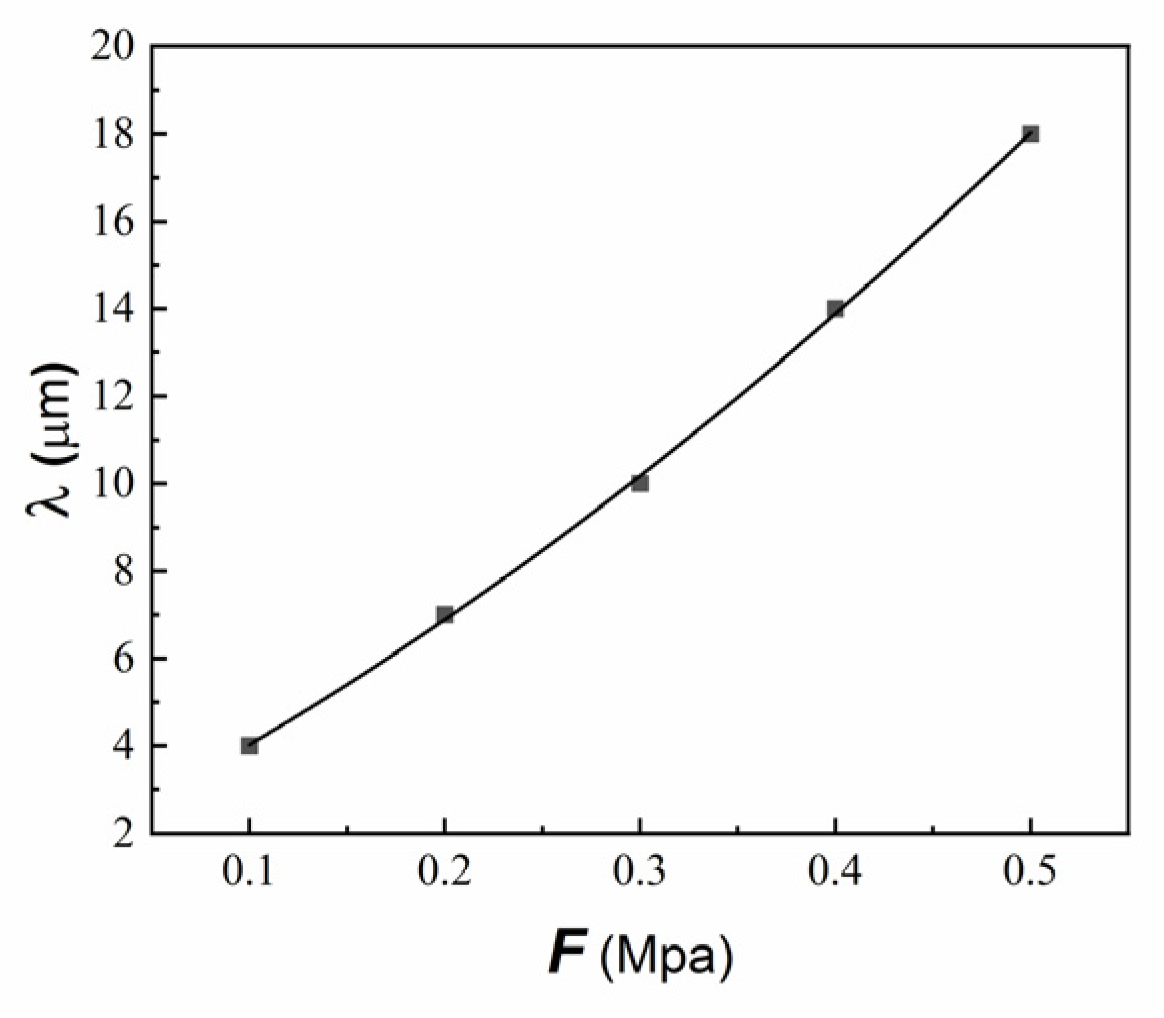


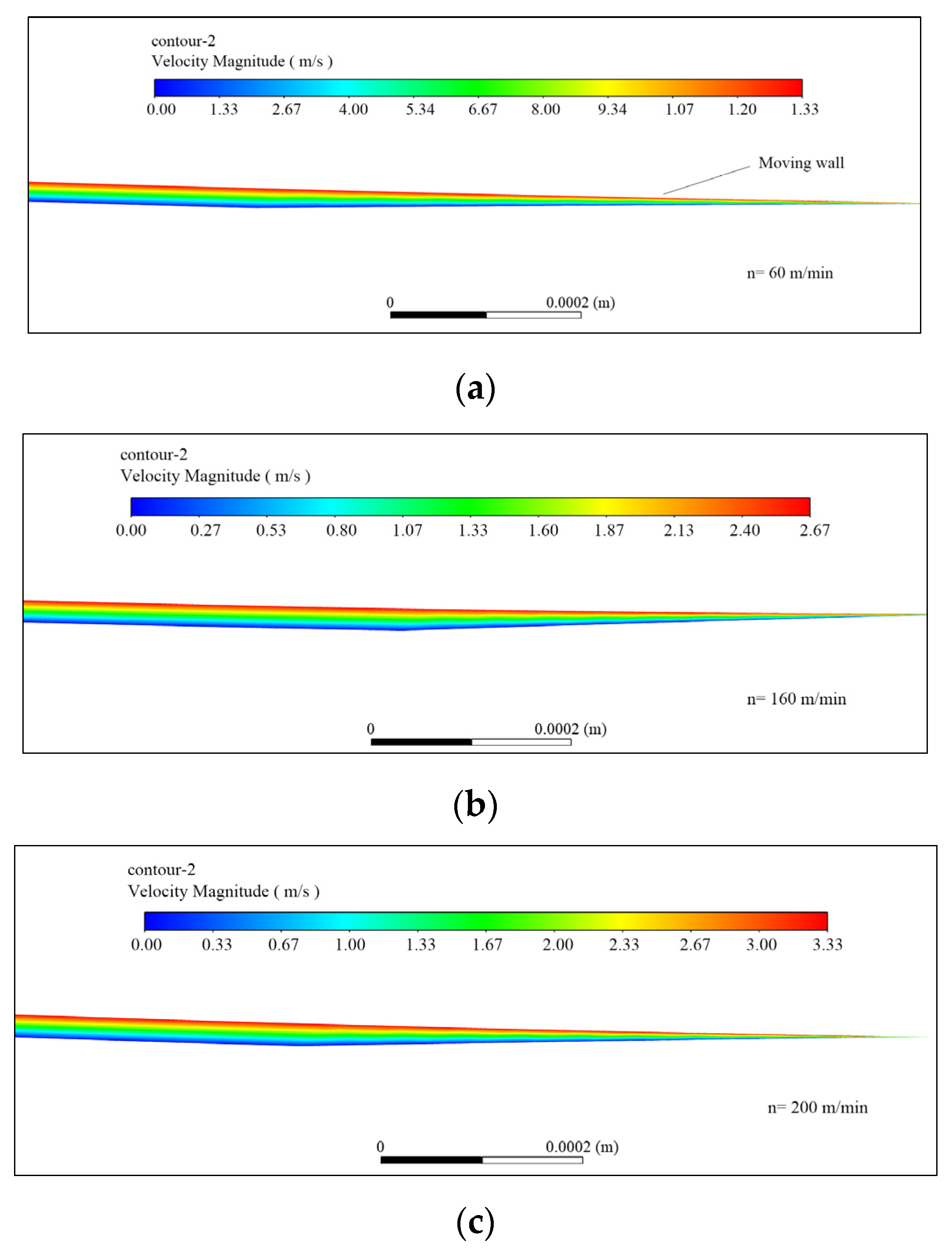

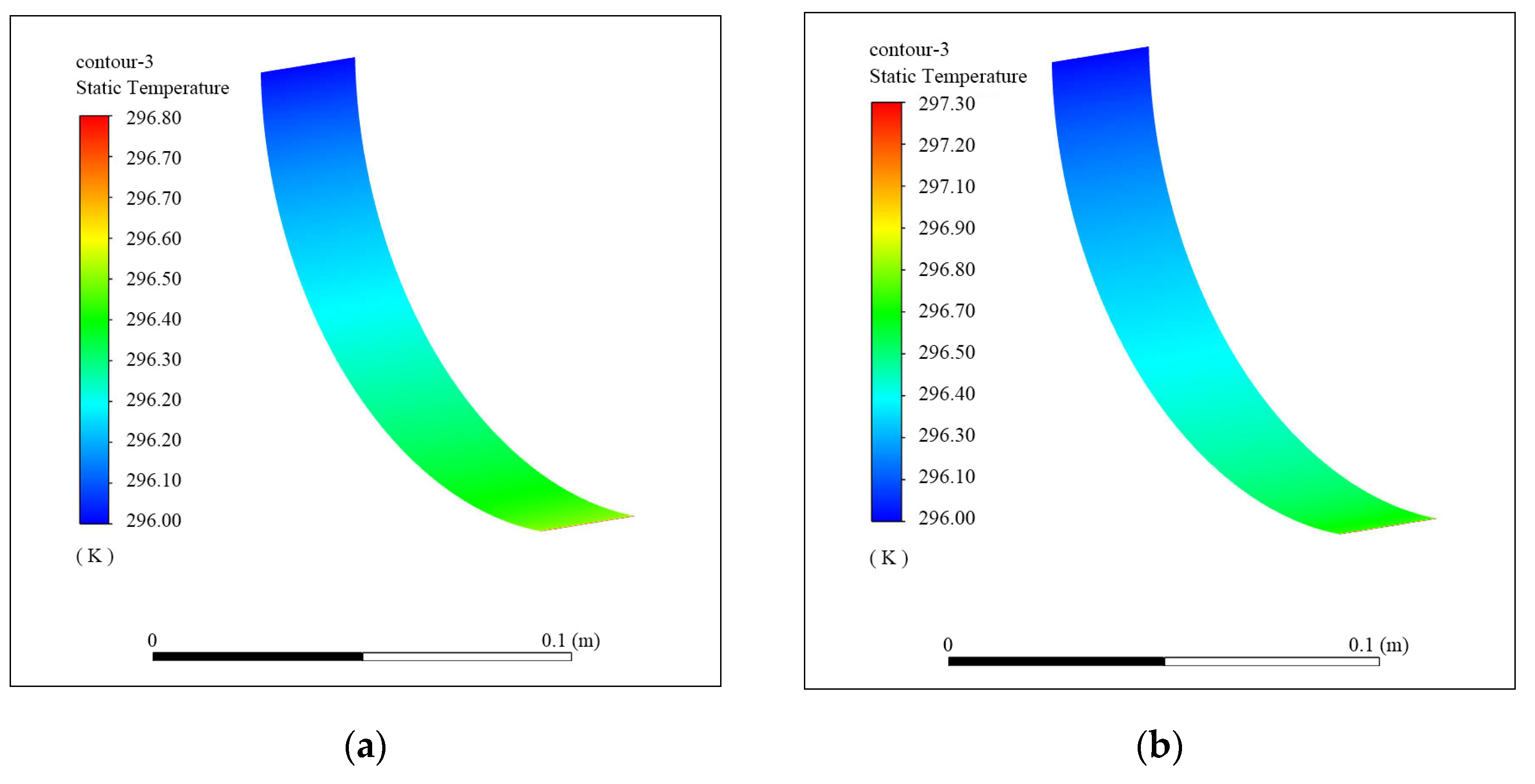

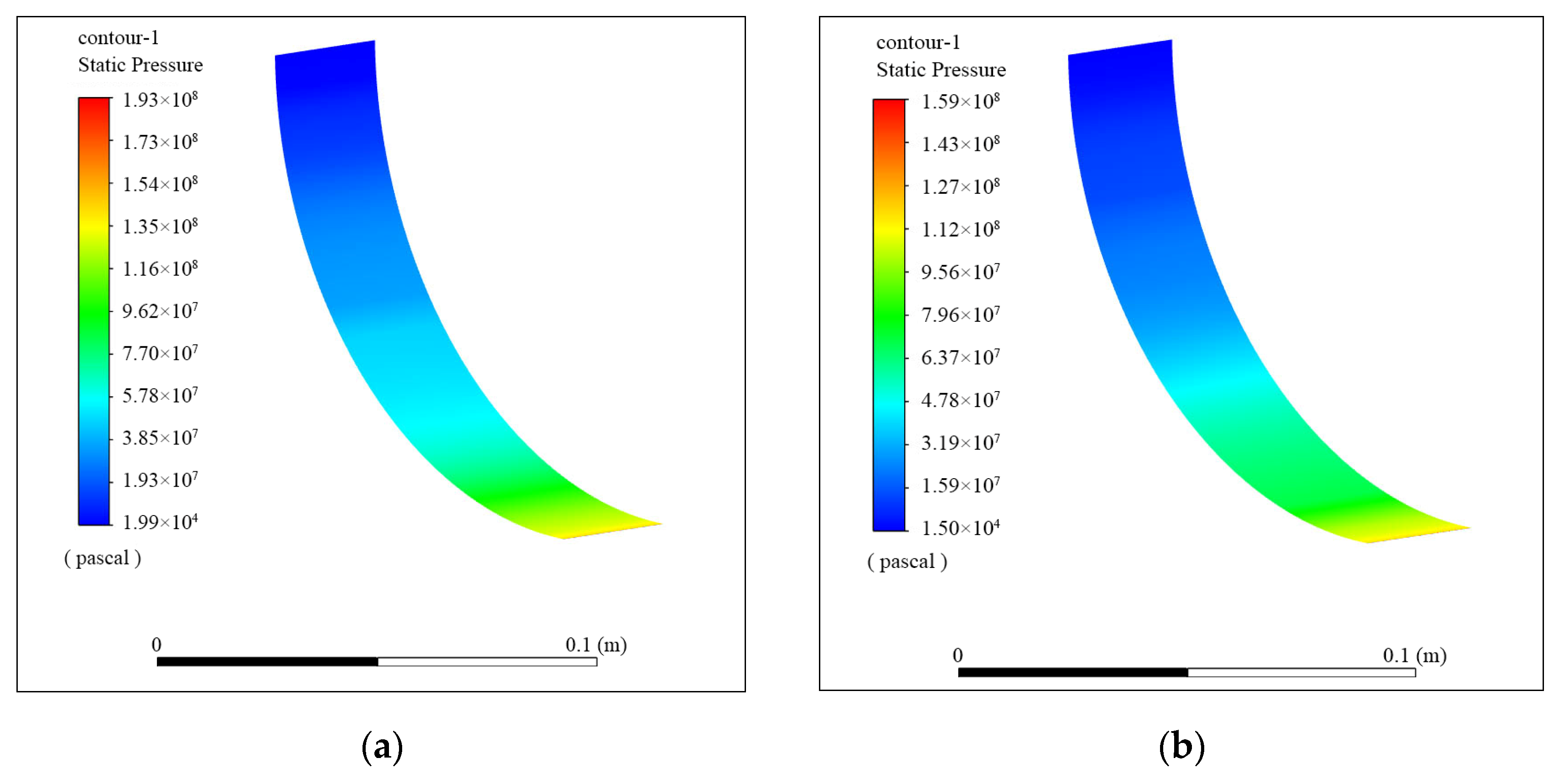

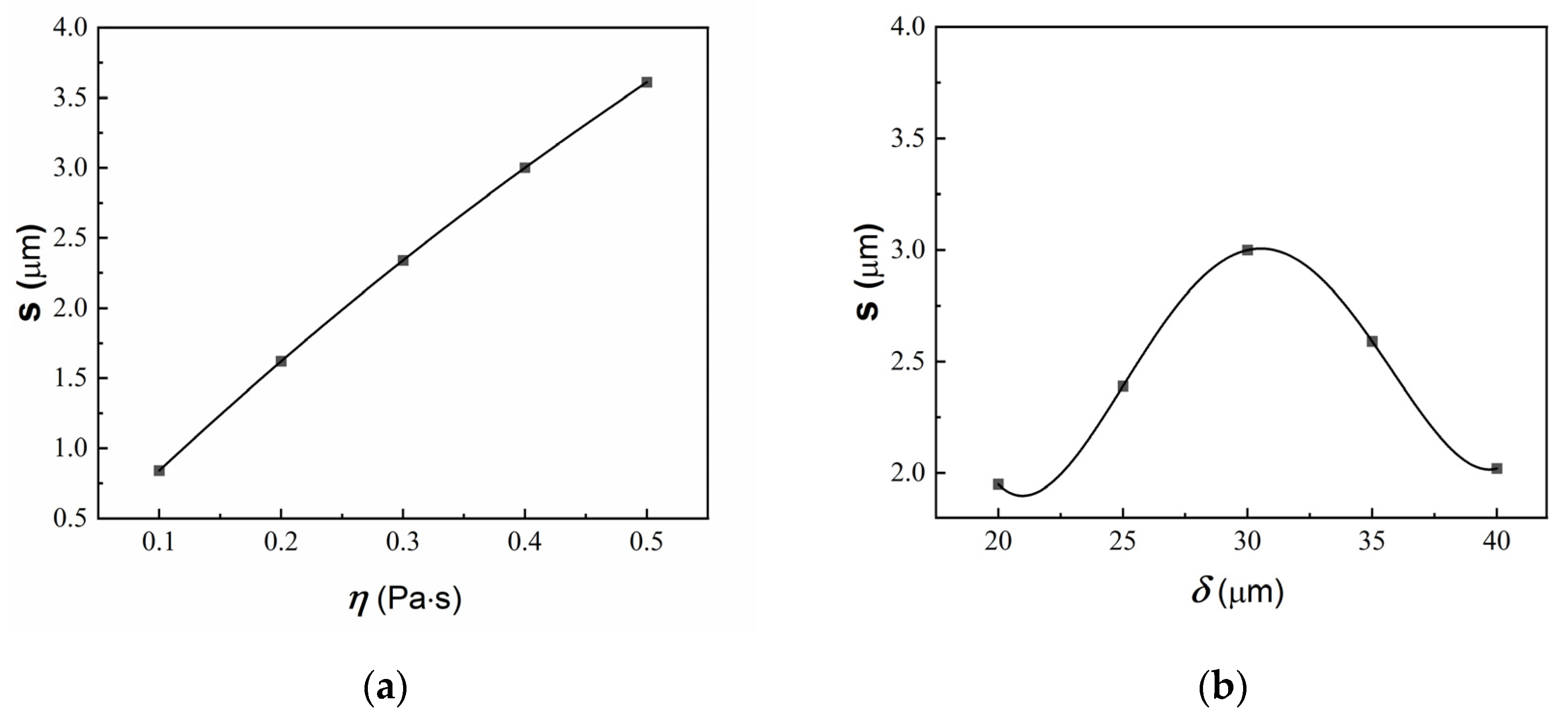
Disclaimer/Publisher’s Note: The statements, opinions and data contained in all publications are solely those of the individual author(s) and contributor(s) and not of MDPI and/or the editor(s). MDPI and/or the editor(s) disclaim responsibility for any injury to people or property resulting from any ideas, methods, instructions or products referred to in the content. |
© 2024 by the authors. Licensee MDPI, Basel, Switzerland. This article is an open access article distributed under the terms and conditions of the Creative Commons Attribution (CC BY) license (https://creativecommons.org/licenses/by/4.0/).
Share and Cite
Zhu, W.; Xing, J.; Zhu, H. Numerical Simulation on Ink Transfer Channel of Flexography Based on Fluid–Solid-Heat Interactions. Processes 2024, 12, 1284. https://doi.org/10.3390/pr12071284
Zhu W, Xing J, Zhu H. Numerical Simulation on Ink Transfer Channel of Flexography Based on Fluid–Solid-Heat Interactions. Processes. 2024; 12(7):1284. https://doi.org/10.3390/pr12071284
Chicago/Turabian StyleZhu, Wanjun, Jiefang Xing, and Hongjuan Zhu. 2024. "Numerical Simulation on Ink Transfer Channel of Flexography Based on Fluid–Solid-Heat Interactions" Processes 12, no. 7: 1284. https://doi.org/10.3390/pr12071284



